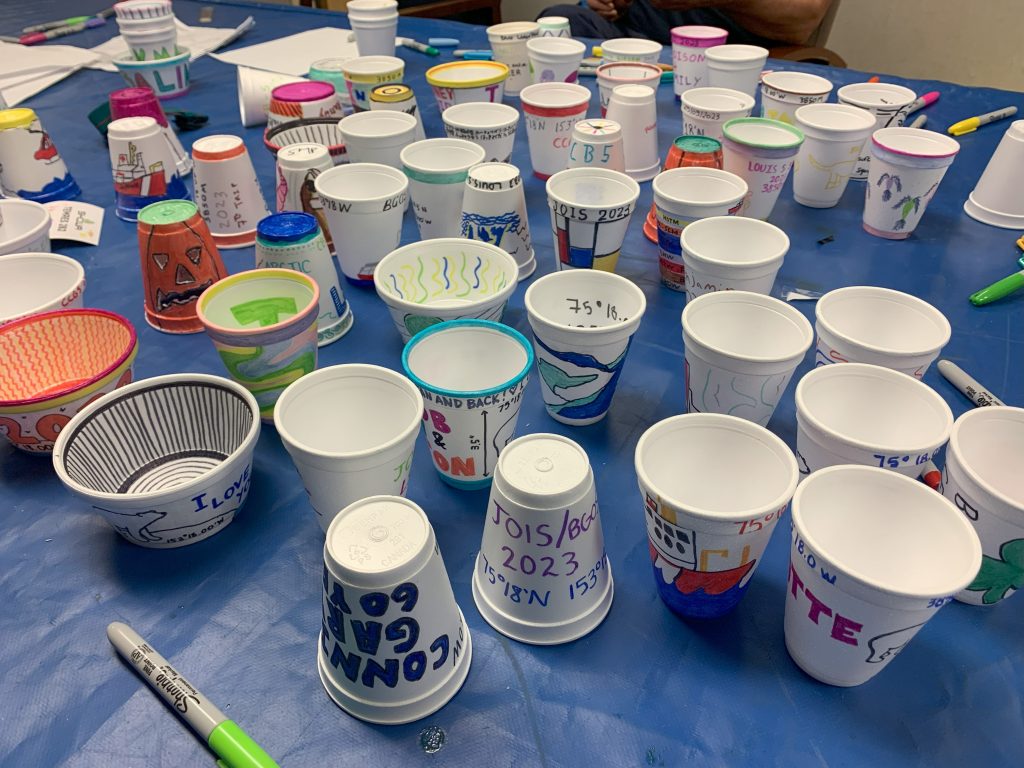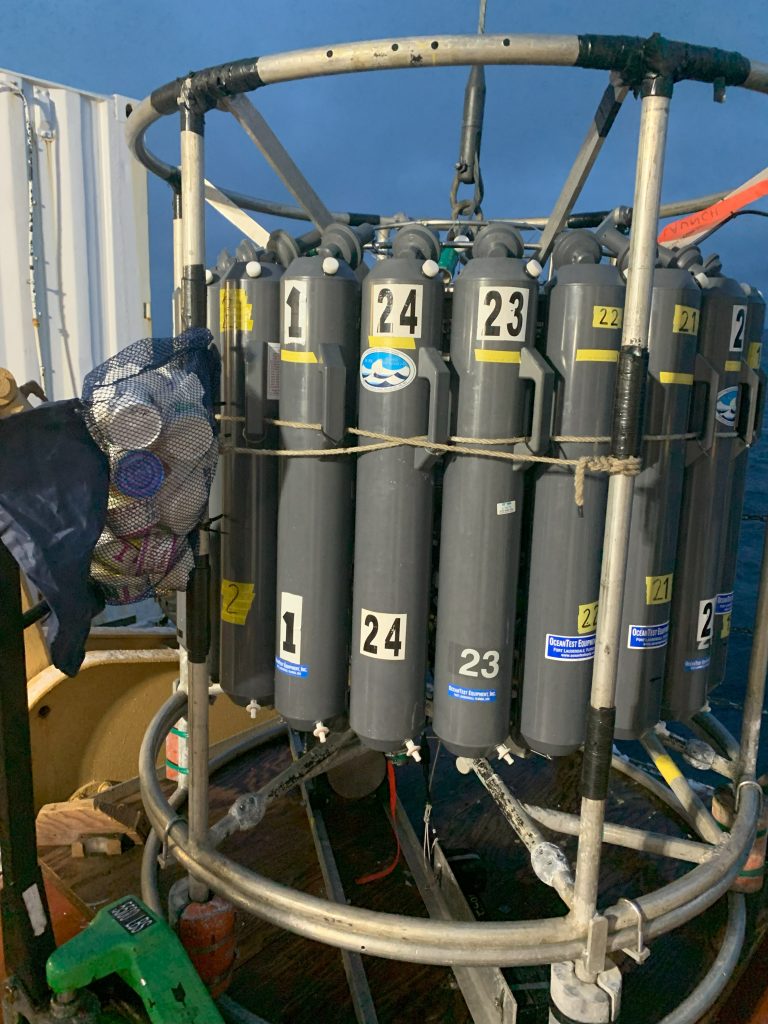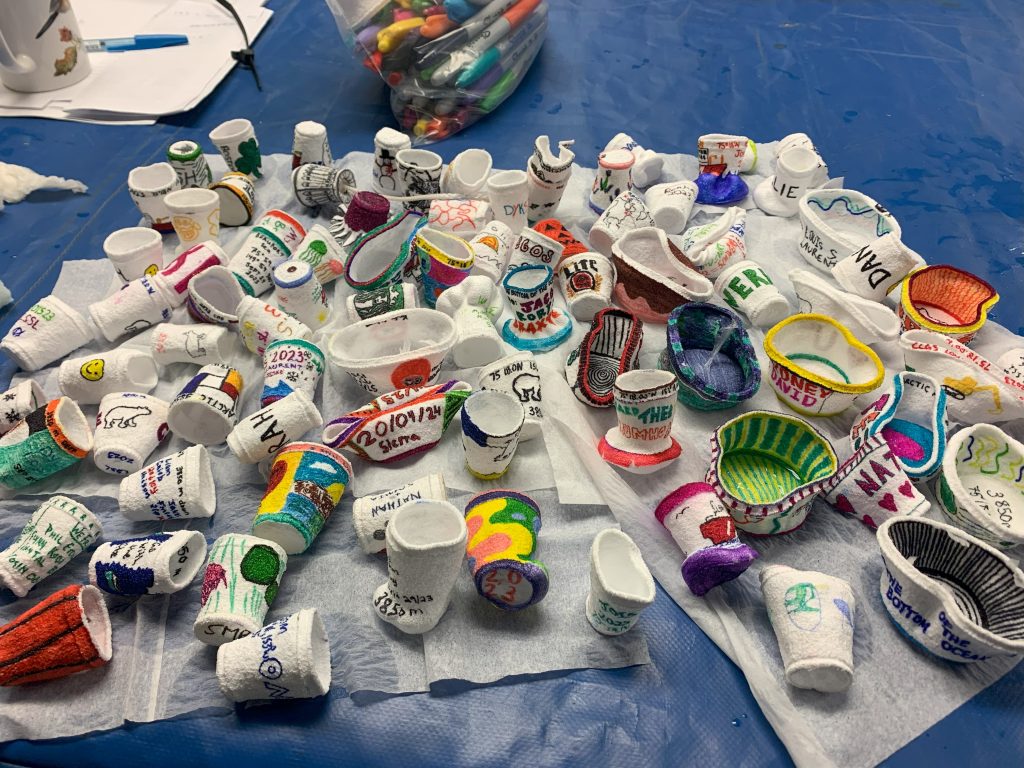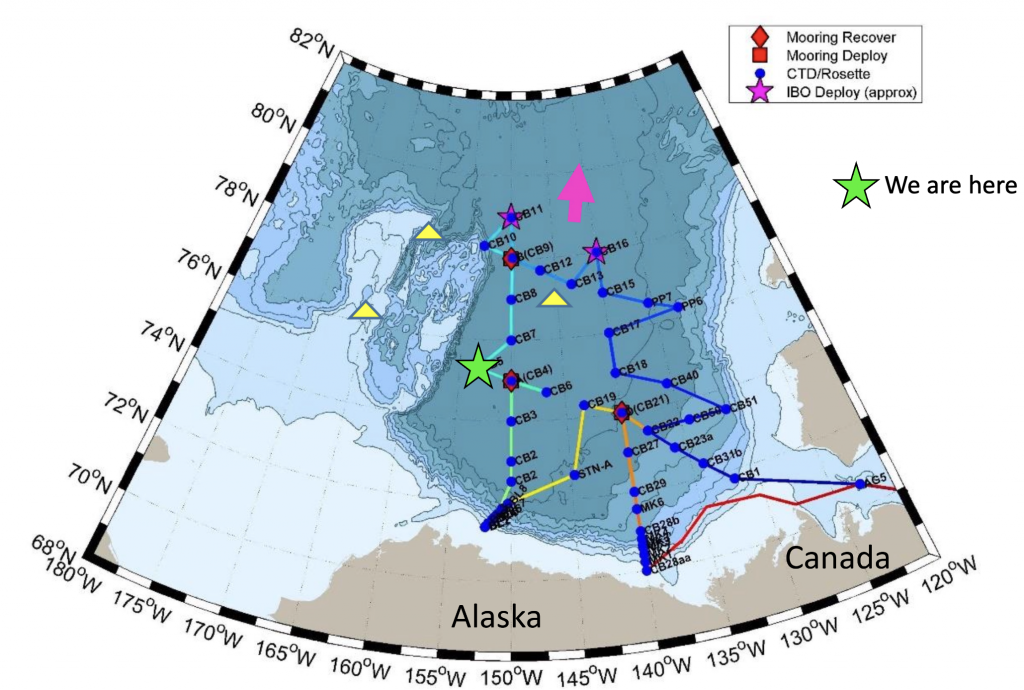Dispatch 15: Shrinking Cups
Sam De Abreu
September 28, 2023
Dispatch 15: Shrinking Cups
We have just reached our deepest station of the trip: CB5 (75N and 153W) with a staggering depth of 3850m! That’s deeper than five Burj Khalifas (the tallest building in the world) stacked on top of each other! With it being our deepest station, it is JOIS/BGOS tradition to attach a bag of Styrofoam cups, each individually stylized by the coastguard and science crew, to the rosette during its data collecting cast. Some styles included sea ice, polar bears, loved ones’ names, trippy designs, and other various creatures. As the cups delve deeper and deeper, they will be crushed and compressed by the enormous amounts of pressure induced by the weight of the Arctic Ocean. When the cups resurface with the rosette, they will be completely deformed, providing to be a neat souvenir of our time on the Louis 2023!
So how much pressure are we talking about here? Well, a general rule is that the pressure in the ocean increases by an atmosphere of pressure (the pressure we feel naturally at sea level) every 10 meters. So, at 3850 meters, the Styrofoam cups will be feeling approximately 385 atmospheres or equivalently about 800,000 Newtons of force. That roughly corresponds to the weight of over 42 cars or 20 elephants! With this in mind, we attached our bag of stylish Styrofoam cups safely to the rosette (such that they won’t interfere with measurements) and performed our little experiment. After retrieving the bag, we found that the Styrofoam cups shrank tremendously with some shrinking more than twice their original size! In addition, all our artwork was preserved and looks even more impressive with it taking up a smaller canvas while maintaining their detail.
There were also bets going around on whether an egg would survive the journey. Some stating that its ellipsoid shape and incompressibility of its innards would prevent an implosion while others (a large majority) claim that the overwhelming pressure would overcome these factors. Unfortunately, we couldn’t test these hypotheses because the yolk (if it were to break) would interfere with our measurements (among other things)!



